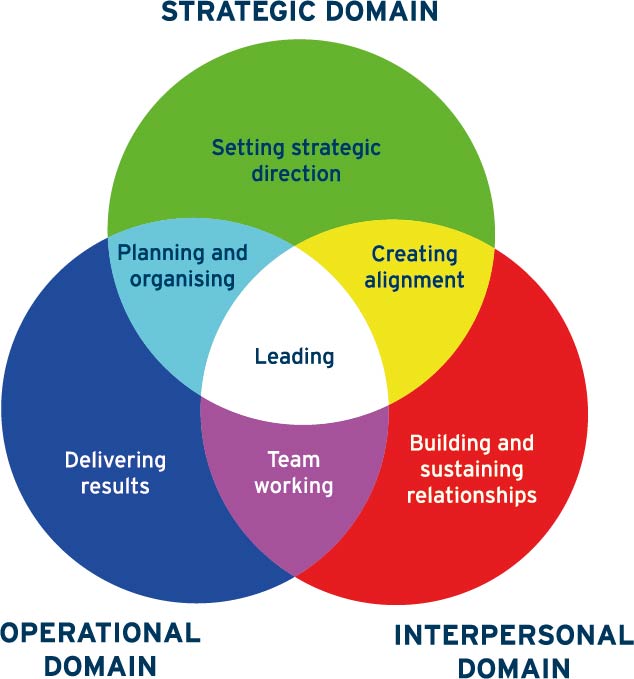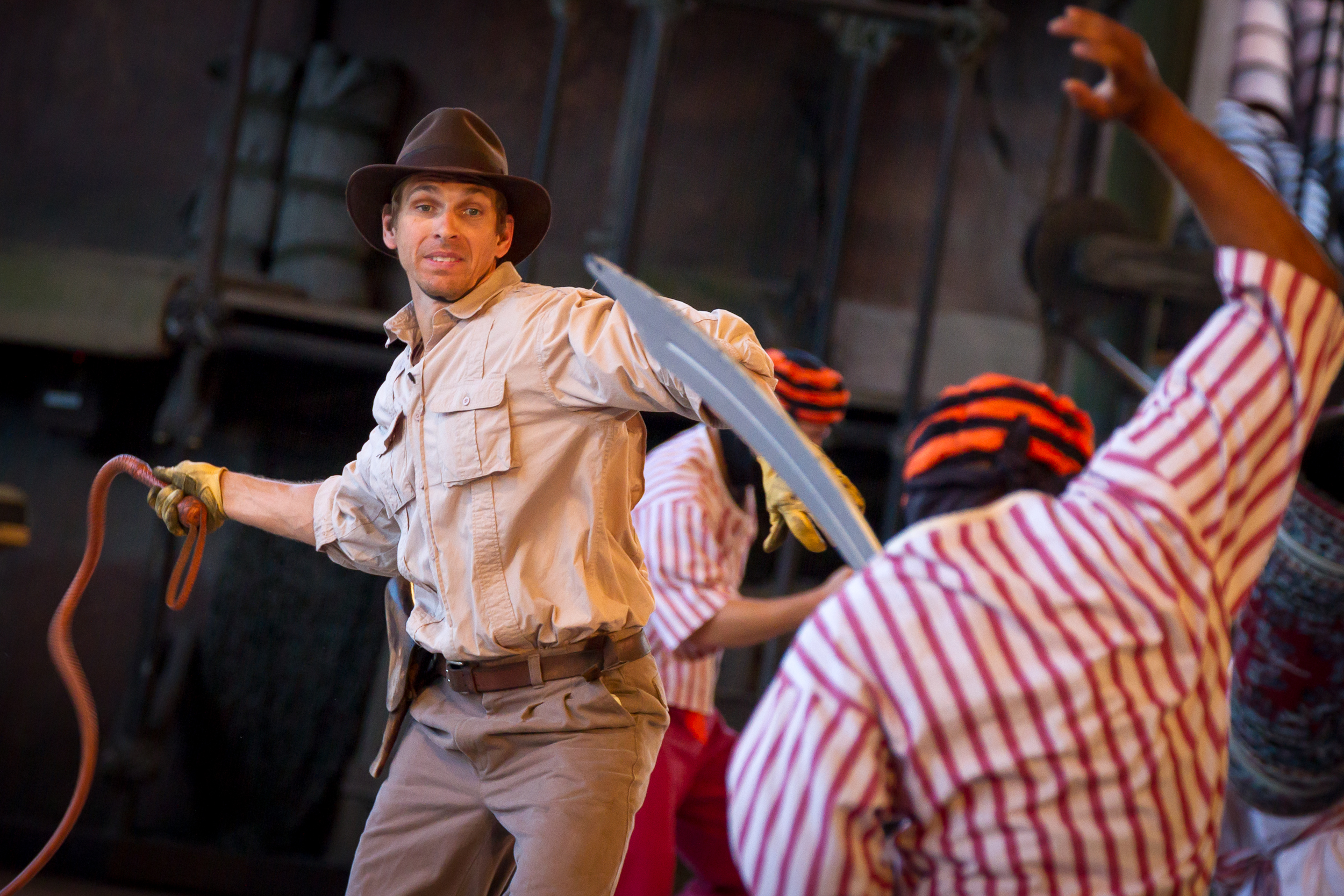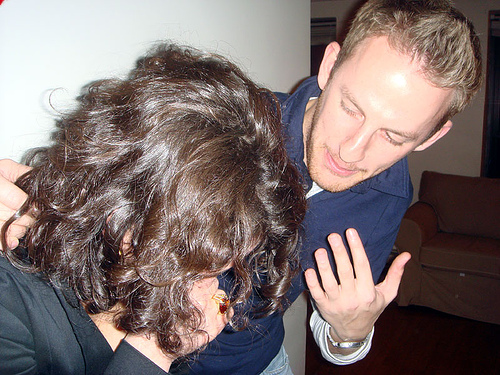Lopsided leadership – Too much of a good thing?
June 30, 2018
Play to your strengths – that’s good advice, right? Well generally, yes, it is. There’s a whole school of thought in HR and business psychology that says you’re much more likely to improve your performance if you keep developing something you’re already good at and use it more, than if you doggedly try and overcome some persistent weakness.
But that’s only half the story. What’s implicit in this idea is that somebody else, someone who’s brilliant at the things you’re not so good at, will be providing a counterbalance. That sounds intuitively obvious, but when it comes to leadership, I’ve found that people often believe that the aspects of leadership that they are good at are what leadership is all about. They don’t notice the other bits exist. They may then recruit other leaders in their own image, creating an imbalance.
To use a football analogy, it would be like an excellent goal keeper recruiting ten other goalies – “Football is all about saving goals and we’re world class at it”. In this context it sounds ridiculous, but in leadership it’s quite common because people don’t understand the different tasks of leadership. This isn’t the same as functional roles – finance, sales, ops, HR and so on. Leadership itself has tasks. Within a senior team these are more likely to be distributed according to people’s personalities and strengths than their functional roles.
I’ve written here before  about my go-to leadership model, the Primary Colours® Model of Leadership, which really nails the question of what leaders actually do (or should do). In an unbalanced team, some of these tasks get neglected. People focus on the bits of leadership that come naturally to them and describe it as their leadership style, as though it doesn’t matter that there are some things they’re just not doing. So what does it look like if you focus too much on just a few tasks of leadership? See if you recognise any of these characters:
about my go-to leadership model, the Primary Colours® Model of Leadership, which really nails the question of what leaders actually do (or should do). In an unbalanced team, some of these tasks get neglected. People focus on the bits of leadership that come naturally to them and describe it as their leadership style, as though it doesn’t matter that there are some things they’re just not doing. So what does it look like if you focus too much on just a few tasks of leadership? See if you recognise any of these characters:
The slave driver
 For the slave driver leadership is all about delivering results. If results are down, they whip a bit harder. People must understand that they have to deliver. They may push themselves just as hard but that doesn’t make anyone else feel better. Of course results matter, but the slave driver achieves them at the expense of people, creating an undervalued and demotivated workforce. But that’s not the only problem. The slave driver is likely to focus on the wrong thing. If results are down because they’re going in the wrong direction or their systems are hopeless or they’ve got the wrong skills in the team, then pushing people harder isn’t going to improve performance.
For the slave driver leadership is all about delivering results. If results are down, they whip a bit harder. People must understand that they have to deliver. They may push themselves just as hard but that doesn’t make anyone else feel better. Of course results matter, but the slave driver achieves them at the expense of people, creating an undervalued and demotivated workforce. But that’s not the only problem. The slave driver is likely to focus on the wrong thing. If results are down because they’re going in the wrong direction or their systems are hopeless or they’ve got the wrong skills in the team, then pushing people harder isn’t going to improve performance.
The strategist
 The strategist is much more cerebral than the slave driver and more future-focused. They’re less concerned about day-to-day trivia. For them, leadership is all about mapping the future, scanning the horizon for threats and opportunities, working out where the organisation will be in five or ten years’ time. This is a very important task of leadership but if no one’s ensuring results are delivered, there might not be a business in five years.
The strategist is much more cerebral than the slave driver and more future-focused. They’re less concerned about day-to-day trivia. For them, leadership is all about mapping the future, scanning the horizon for threats and opportunities, working out where the organisation will be in five or ten years’ time. This is a very important task of leadership but if no one’s ensuring results are delivered, there might not be a business in five years.
The planner
 The planner loves a good a system. For them leadership is about ensuring that things run smoothly. Processes, procedures, plans, guidelines, flowcharts – they’re all important to a well-run organisation. But there are two problems with an over-focus on planning and organising. Firstly, planners sometimes go off and design their processes in isolation, without enough thought for the people who’ll actually use them. They then meet resistance when they try to implement them. Secondly, they run the real risk of creating an overly bureaucratic organisation, that’s rigid and can’t respond easily to change.
The planner loves a good a system. For them leadership is about ensuring that things run smoothly. Processes, procedures, plans, guidelines, flowcharts – they’re all important to a well-run organisation. But there are two problems with an over-focus on planning and organising. Firstly, planners sometimes go off and design their processes in isolation, without enough thought for the people who’ll actually use them. They then meet resistance when they try to implement them. Secondly, they run the real risk of creating an overly bureaucratic organisation, that’s rigid and can’t respond easily to change.
The Superhero
 The superhero is there to save the day. For them leadership is all about tackling big problems and averting crises, often at the very last minute. Their cool head and clear sight under pressure may inspire awe, gratitude or loyalty. Who wouldn’t want a superhero? Well maybe there wouldn’t have been a crisis if they’d been more organised or had a clearer idea of where they were going. And how much do the people around the superhero grow and develop if Super Leader swoops in and rescues the situation every time?
The superhero is there to save the day. For them leadership is all about tackling big problems and averting crises, often at the very last minute. Their cool head and clear sight under pressure may inspire awe, gratitude or loyalty. Who wouldn’t want a superhero? Well maybe there wouldn’t have been a crisis if they’d been more organised or had a clearer idea of where they were going. And how much do the people around the superhero grow and develop if Super Leader swoops in and rescues the situation every time?
The Messiah
 For the messiah, leadership is all about vision. Like the strategist, they’re future-focused, but they have a better understanding of the need to take people with them. Often very charismatic, their message may be aimed more at the heart than the head. They may inspire devoted followers. This is a very powerful form of leadership, but where’s the detail? Who’s making sure the dull day-to-day stuff gets taken care of? Not the messiah, that’s for sure.
For the messiah, leadership is all about vision. Like the strategist, they’re future-focused, but they have a better understanding of the need to take people with them. Often very charismatic, their message may be aimed more at the heart than the head. They may inspire devoted followers. This is a very powerful form of leadership, but where’s the detail? Who’s making sure the dull day-to-day stuff gets taken care of? Not the messiah, that’s for sure.
The Cheerleader
 For the cheerleader, leadership is all about motivation and team spirit. Surprisingly, they’re not dissimilar in some ways to the slave driver. Both are focused on results, but the cheerleader encourages people to achieve and celebrates success, rather than threatening punishment for failure. But they could find themselves Ra-Ra-Ra-ing at people who are going in the wrong direction or working with processes or plans that aren’t fit for purpose.
For the cheerleader, leadership is all about motivation and team spirit. Surprisingly, they’re not dissimilar in some ways to the slave driver. Both are focused on results, but the cheerleader encourages people to achieve and celebrates success, rather than threatening punishment for failure. But they could find themselves Ra-Ra-Ra-ing at people who are going in the wrong direction or working with processes or plans that aren’t fit for purpose.
The Social Worker
 For the social worker, leadership is about looking after their team. They build great relationships, remember birthdays and pay attention to things going on in people’s personal lives to make sure they’re not under too much pressure. They believe that if you look after your staff and treat them well, they’ll reward you with good performance. Often they’re right. But it can be difficult for the social worker to hold people to account. Sometimes they infantalise their staff by protecting them from pressure from above or from the consequences of their mistakes. How do you grow future leaders if someone else always makes it all better for them?
For the social worker, leadership is about looking after their team. They build great relationships, remember birthdays and pay attention to things going on in people’s personal lives to make sure they’re not under too much pressure. They believe that if you look after your staff and treat them well, they’ll reward you with good performance. Often they’re right. But it can be difficult for the social worker to hold people to account. Sometimes they infantalise their staff by protecting them from pressure from above or from the consequences of their mistakes. How do you grow future leaders if someone else always makes it all better for them?
With the possible exception of slave-driving, there’s nothing inherently wrong with any of these types of leadership. But not if that’s all you’ve got and they’re over-played. Leadership requires a balance of skills. Don’t ignore the ones that aren’t yours.
If you’d like to explore your strengths as a leader or those of your team, I’d be happy to have a chat: caroline@carolinegourlay.co.uk.
Photo credits
The Primary Colours® Model is the intellectual property of Edgecumbe Consulting






Your site is also very interesting, very calming effect just reading it. Will spend more time with certain areas. Well done and good luck with your work.